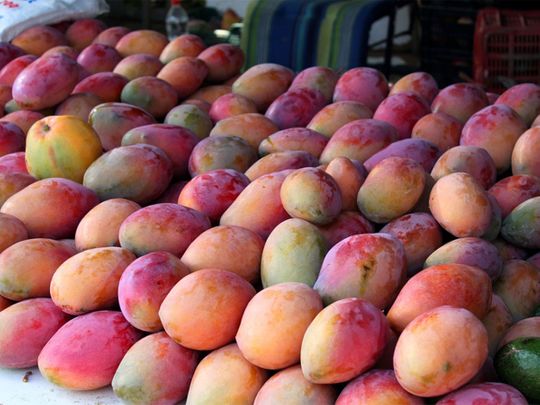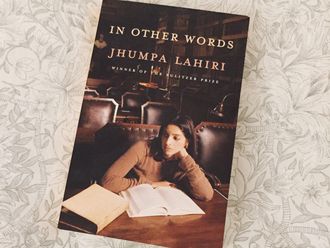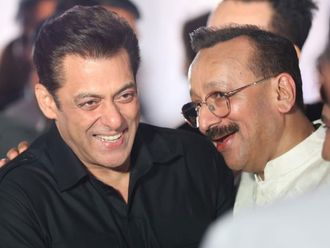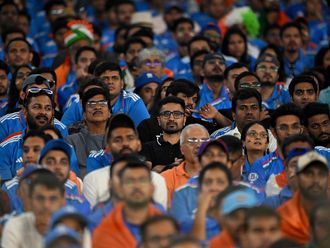
When I saw the pyramid of gleaming golden mangoes on a pushcart on the crowded Commercial Street of Bengaluru, I just had to buy lots of kilos.
As you must have guessed, I love mangoes, which have been dubbed the King of Fruits, and have been the favourite fruit of Indian kings, poets and prime ministers.
Mangoes bring back nostalgic memories, though I have never been deprived of eating them even when living in the Arab Gulf for many years, as every mango season, hotels and hypermarkets would announce ‘mango festivals’ and chefs went hyper creative and concocted sumptuous desserts from the fruit.
Every summer in my hometown, the push cart vendor would wander around our neighbourhood shouting, ‘Aam lo aam’, (Mangoes, come and buy). We would dunk the mangoes in a bucket of water and drop in a slab of ice and sucking up the juice from the ice-cold mangoes was better than any ice cream.
It is said that it was because of mangoes that a Mughal emperor decided to come and stay in India. Babur was cajoled into India after his triumph in Kabul, to face the fierce Rana Sanga of Mewar, and it was mangoes that convinced him the fruit was worth the fight.
Akbar, another Mughal emperor, built the vast Lakhi Bagh (garden), and planted over 100,000 mango trees. It was here the one of the first graftings of the fruit took place and the famous varieties such as the ‘Totapuri’ and ‘Kesar’ were grown.
The famous Alphonso variety, the King of Mangoes, is said to have originated from the orchards of the powerful Peshwa (prime minister) of the Marathas, Raghunath Peshwa, who had planted 10 million mango trees as a sign of Maratha supremacy.
When the ‘aam’ reached south of India and into Kerala, the fruit was called “manga”. Arab traders landed and took the fruit back home and mango or ‘manga’ (as it is known in Arabic) is eaten with relish even today in the Gulf States and in the Middle East.
There is a cute story about Urdu poet Mirza Ghalib who loved mangoes to an extreme. One day Ghalib and his friend were walking the streets of Delhi when the friend saw a donkey nuzzling a heap of mango skins and the pits in trash and decided to tease Ghalib.
When he saw the donkey turn away from the garbage, the friend said to Ghalib, pointing at the donkey: “See, even donkeys don’t eat mangoes”.
Ghalib immediately retorted: “Yes, donkeys don’t eat mangoes.”
I came home with the mangoes and unloaded them in the fridge and waited impatiently for them to cool. Outside, the temperature had touched 32 degree Celsius.
When I cut open the juicy fruit and took a spoonful into my mouth, my jaw dropped. Instead of the sweet, aromatic taste, this one tasted of nothing.
Later I found out that farmers are using calcium carbide, a banned substance, to ripen fruit fast and get it into the market quickly for higher prices.
The substance produces acetylene gas that generates heat and the mango turns yellow from the outside but does not ripen inside. That’s one way to know if the fruit was artificially ripened. The mango will be completely yellow in colour, and not light green with patches of yellow. If you cut it, the fruit would be pulpy in spots inside.
Make sure the mangoes you buy are organically grown.
It’s mango season now and stalls are set up behind the Bengaluru Palace, and once again people come from across the city to buy their favourite fruit here, creating traffic jams.
Mahmood Saberi is a storyteller and blogger based in Bengaluru, India. Twitter: @mahmood_saberi.











